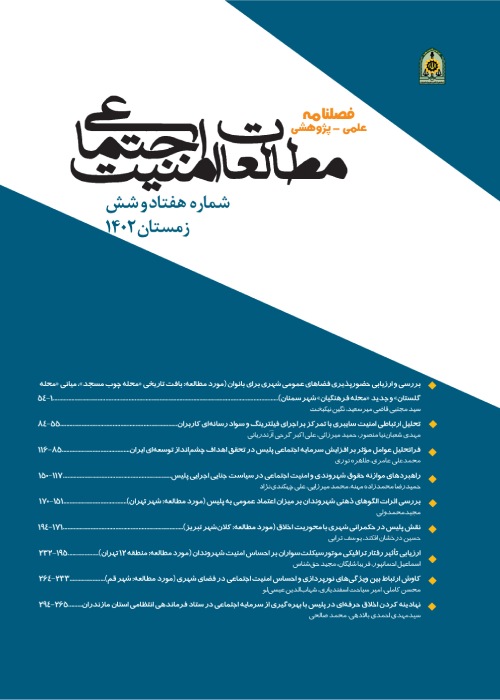Analyzing the Impacts of Arms Trafficking on the Public Security of Kermanshah Province
Security is among the basic human needs, and once public security is deployed; peace, human flourishing, the emergence of talents and creativity will be achieved. One of the social issues that most communities and especially border provinces are involved in is arms trafficking and, accordingly, the state of public security. The main purpose of the present study is to investigate the impacts of arms trafficking on the public security of Kermanshah province.
The present study was conducted using a combined (quantitative-qualitative) method. The survey method was used in the quantitative part and the grounded theory method was used in the qualitative part. The data collection tool was a researcher-made questionnaire in the quantitative part and a semi-structured and in-depth interview in the qualitative part. For the qualitative part, four groups of participants: military and law enforcement elites, university professors, arms traffickers, as well as ordinary people who had expertise in this field using a targeted method and in the quantitative part using SPSS Sample Power, and 540 people from among people in the entire province, were investigated using random strata method. The findings were analyzed using two soft wares: SPSS and AMOS.
The research findings show that there is a significant and inverse relationship between arms trafficking and public security. This influence is negative for all dimensions of security and shows a reverse influence on it. In this sense, the more the prevalence of arms trafficking in the province, the weaker the public security status. The findings of the regression model in Imus show that the chi- square value as a bad fit index is 5808.091. The RMSEA index, represents the average residual between the correlation-covariance observed from the sample and the expected estimate of the model for the population, and indicates the difference between the coefficients of the sample and the population. In this model, the goodness-of-fit index (CFI) of 0.077 indicates a good match between the model and the data. This index is also based on the correlation between the variables in the model and is 0.668. As much as the actual model size gets closer to a saturated model, the corrected goodness-of-fit index (PCFI) penalizes it. Values of 0.50 and above are acceptable. The results of this index are 0.24, which can be concluded that the collected data largely supports the measurement and structural model. It could be inferred that the average arms trafficking in the province is relatively higher than expected by the society; on the other hand, the level of public security in the province is higher than the society's expectations. Of course, these results for dimensions such as environment, societal security, and psychological security are lower than expected by society.
- حق عضویت دریافتی صرف حمایت از نشریات عضو و نگهداری، تکمیل و توسعه مگیران میشود.
- پرداخت حق اشتراک و دانلود مقالات اجازه بازنشر آن در سایر رسانههای چاپی و دیجیتال را به کاربر نمیدهد.



